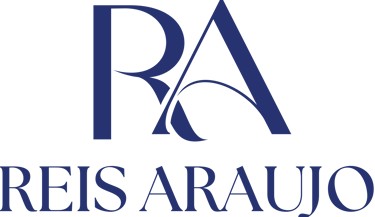Brazilian Trademark and Patent Office Issues Regulation on Acquired Distinctiveness of Trademarks
Learn about the new Brazilian regulation from Brazilian Trademark and Patent Office on acquired distinctiveness in trademarks, improving the trademark registration process and legal certainty for trademark owners.
6/10/20252 min read


On June 10, 2025, the Brazilian Patent and Trademark Office (INPI) published a new regulation establishing rules to request and register a trademark based on acquired distinctiveness.
What is Acquired Distinctiveness?
Under Brazil’s Industrial Property Law (Law No. 9,279/1996), one of the essential requirements for trademark registration is distinctiveness. A sign must be capable of distinguishing the goods or services of one party from those of others.
As a general rule, marks consisting solely of descriptive or generic terms, images, or shapes cannot be registered. However, in certain cases, such elements may acquire distinctiveness through extensive and consistent use in the marketplace, becoming associated in the public’s mind with a specific source. This phenomenon is known as acquired distinctiveness (or secondary meaning). As trademark attorneys, it is common to see clients facing challenges in registering this type of trademark.
Understanding the Regulation
Although acquired distinctiveness is a well-established concept in trademark law, Brazil previously lacked specific regulations detailing how the INPI would assess such claims. Usually, in Brazil, trademarks of this nature would be rejected, and recognition was more common through court decisions.
By establishing a clear path for the recognition of acquired distinctiveness, the new regulation enhances legal certainty and strengthens the Brazilian trademark system’s alignment with international best practices. It is an important step for brand owners seeking to protect signs that have gained recognition through use, even if those signs might not have been registrable at first glance.
The new regulation addresses this gap by:
Providing a formal definition of acquired distinctiveness;
Establishing the procedural requirements for applicants who wish to invoke it;
Detailing the necessary documentation, deadlines, and examination criteria.
The trademark owner may request the examination of acquired distinctiveness at specific times established by the regulation: at the time of filing the trademark application; within 60 days after the publication of the application; when filing an administrative appeal against a refusal based on the lack of inherent distinctiveness; when submitting a response to an opposition grounded on lack of distinctiveness; and finally, when submitting a response in an administrative cancellation proceeding based on lack of distinctiveness.
In all cases, a clear and express statement showing that the trademark has acquired distinctiveness must be attached to the corresponding filing or petition.
The evidentiary documentation proving acquired distinctiveness through use must demonstrate two key points: first, that the trademark in question has been used substantially and continuously for at least three years prior to the date of the request; and second, that a significant portion of the national consumer public recognizes the trademark as exclusively associated with its owner, capable of identifying the products or services linked to that owner and distinguishing them from identical or similar products or services of different origin. In this regard, a market survey demonstrating consumer recognition of the trademark can be especially useful.
The regulation will come into effect on November 28, 2025. Applicants with trademark applications in progress or holders of trademark registrations subject to administrative cancellation proceedings based on lack of distinctiveness as of the date of publication of this regulation are granted an extraordinary period of 12 months from its entry into force of the regulation.
If you have any questions or need assistance regarding the new regulation and how to proceed with your trademark application, please feel free to contact our team for support.


